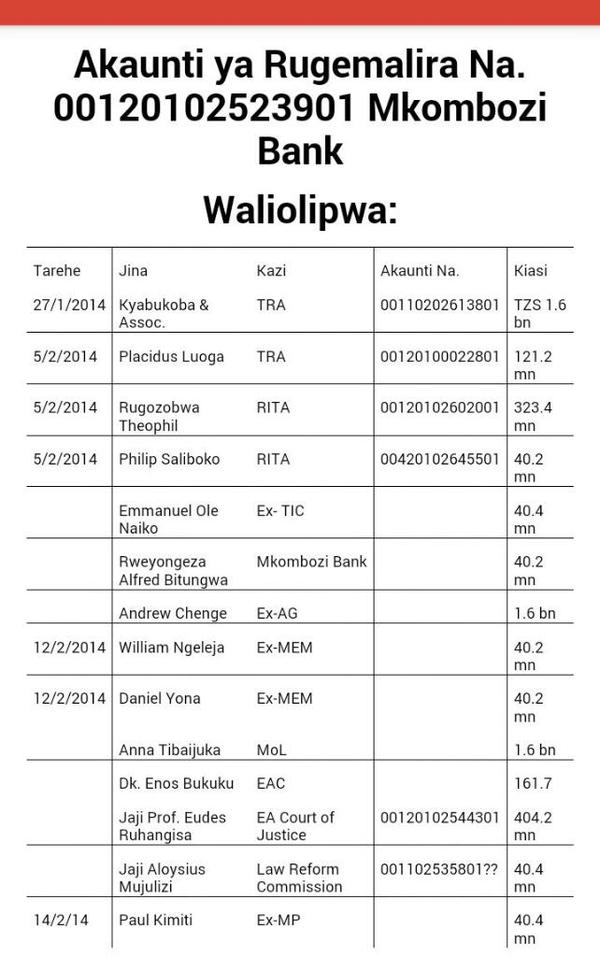How James Rugemalira outsmarted the Government of Tanzania (GoT)
akiwa na mkewe
THE POWER AND THE VAINGLORY: Anatomy of a $100 Million Malaysian IPP in Tanzania
Brian COOKSEY*
Forty years ago, Malaysia had a more or less similar economic development profile to most of sub-Saharan Africa.
Since then, Malaysia has risen to “middle income” status in the international pecking-order, radically reducing poverty in the process, while sub-Saharan Africa remains the poorest, least developed continent in the world.
Corruption helps explain why.
This chapter describes a Malaysian investment that may bleed Tanzania of hundreds of millions of dollars in bloated payments for electricity that the country neither needs nor can afford. Tanzania is not in the same class as Nigeria, Congo (former Zaïre) or Kenya as regards political corruption, but grand corruption in government is all too common.
Major bribery in contracting and procurement, plus systematic petty corruption among government officials, constitute serious obstacles to foreign investment, economic growth, and social equity as well as undermining political legitimacy.
Moreover, the complexity and unpredictability of the state bureaucracy make bribery an often self-defeating practice. Foreign direct investment into Tanzania was virtually non-existent from the late nineteen-seventies to the late nineties. Most social and economic infrastructure was built with loans and grants from aid agencies.
One would imagine, therefore, that a multi-million dollar investment in private power generation would be a most welcome addition to Tanzania’s economic infrastructure. One would be wrong. As it stands, Tanzanian electricity consumers, taxpayers and donor agencies will be lining the pockets of Malaysian investors through corruptly earned rents for the next twenty years. How this project was hatched, resisted, and eventually commissioned is the subject of this chapter. 
Chronology of Main Events:
-1994 Drought leads to power shortages as hydro catchment areas run dry.
-State power utility Tanesco invites emergency solutions, eventually settling for two turbines financed by foreign aid.
-1994 Joint venture set up between Mechmar Corporation of Malaysia (70%) and VIPEM of Tanzania (30%) known as Independent Power Tanzania Ltd (IPTL)
-August 1994 IPTL sign a Memorandum of Understanding to provide electricity under an Independent Power Project arrangement as a ‘fast track’ measure, but a ‘medium to long term solution’ is proposed in November.
-Nov 1994 – June 1995 IPTL starts negotiations with Tanesco through KTA Tenaga Sdn Bhd (Malaysia-engineering), Fieldstone Private Capital Group (USA-finance), and Long and Co. and Clyde and Co. (UK-legal affairs)
-May - June 1995 IPTL and Tanesco sign a 20 year Power Purchasing Agreement (PPA) to build and run a 100 megawatt slow-speed diesel (SSD) power plant at Tegeta, Dar es Salaam at a cost of $163.5 million, including an Engineering Procurement and Construction contract (EPC) price of $126.39, and with a ‘reference tariff’ of$4.2 million per month plus 3.25 US cents per kWh of electricity actually produced.
-The final tariff will depend on actual costs incurred.
-February 1995 - January 1996 Without informing Tanesco, IPTL negotiates with Wärtsila to build a cheapermedium-speed diesel (MSD) plant.
-Wärtsilä’s EPC bid increases by 33%, from $85.7 million to $114.2 million, even though the scope of the project falls considerably.
-February 1997 EPC contract signed.
-May 1997 Mechmar/IPTL obtain $105 million loan from Sime Bank and Bank Bumiputra. September 1997 Tanesco requests full documentation on actual costs incurred in order to negotiate final power purchase tariffs.
-IPTL produces the EPC at the end of February 1998.




